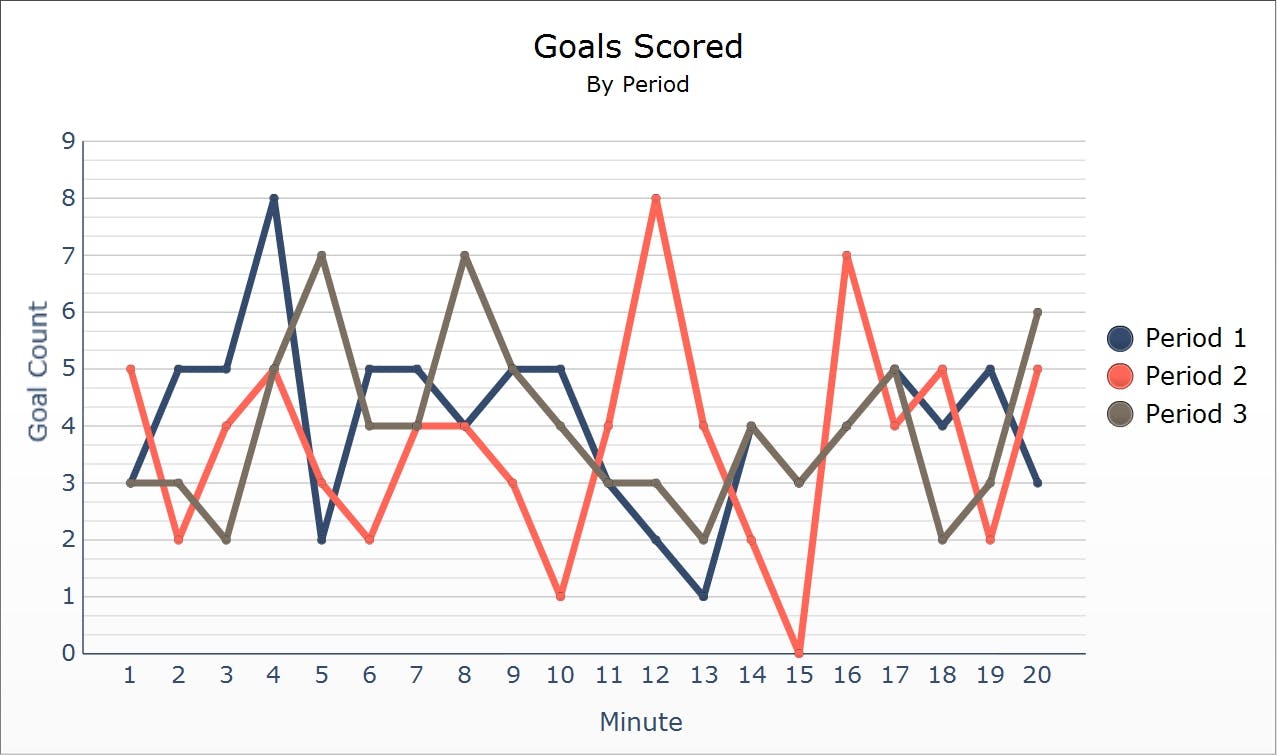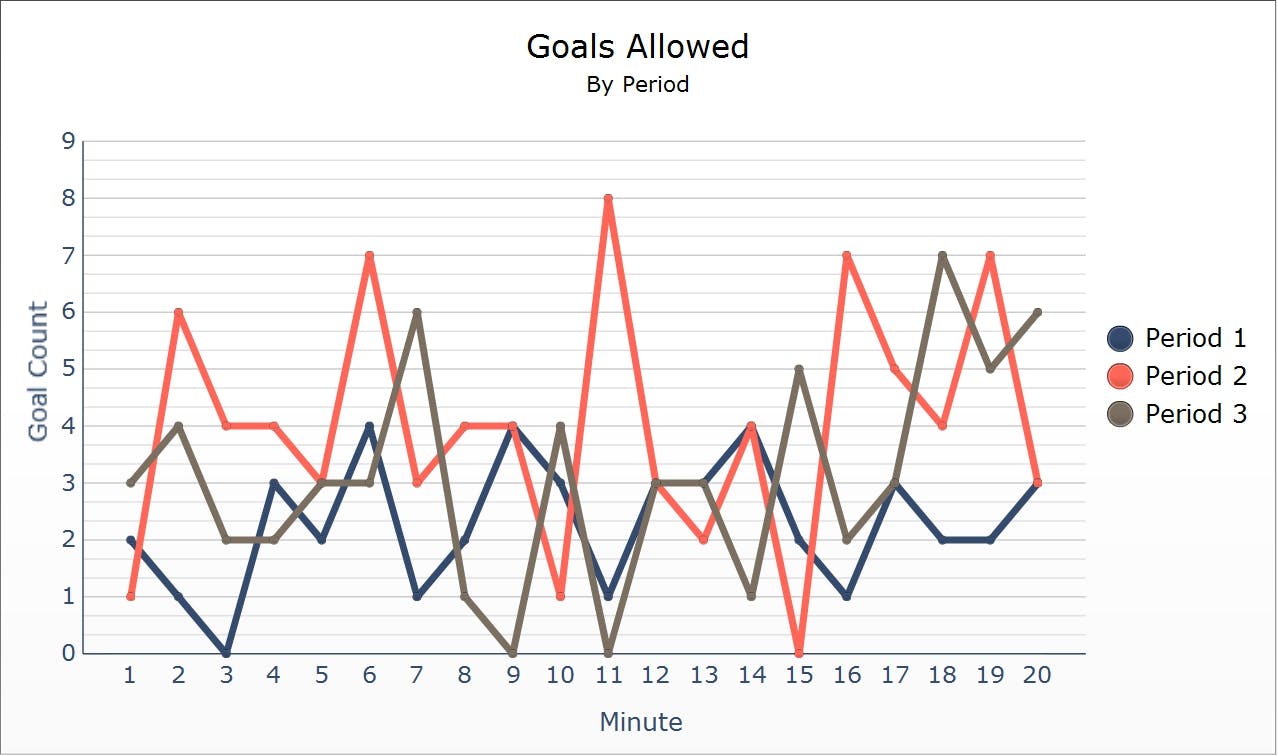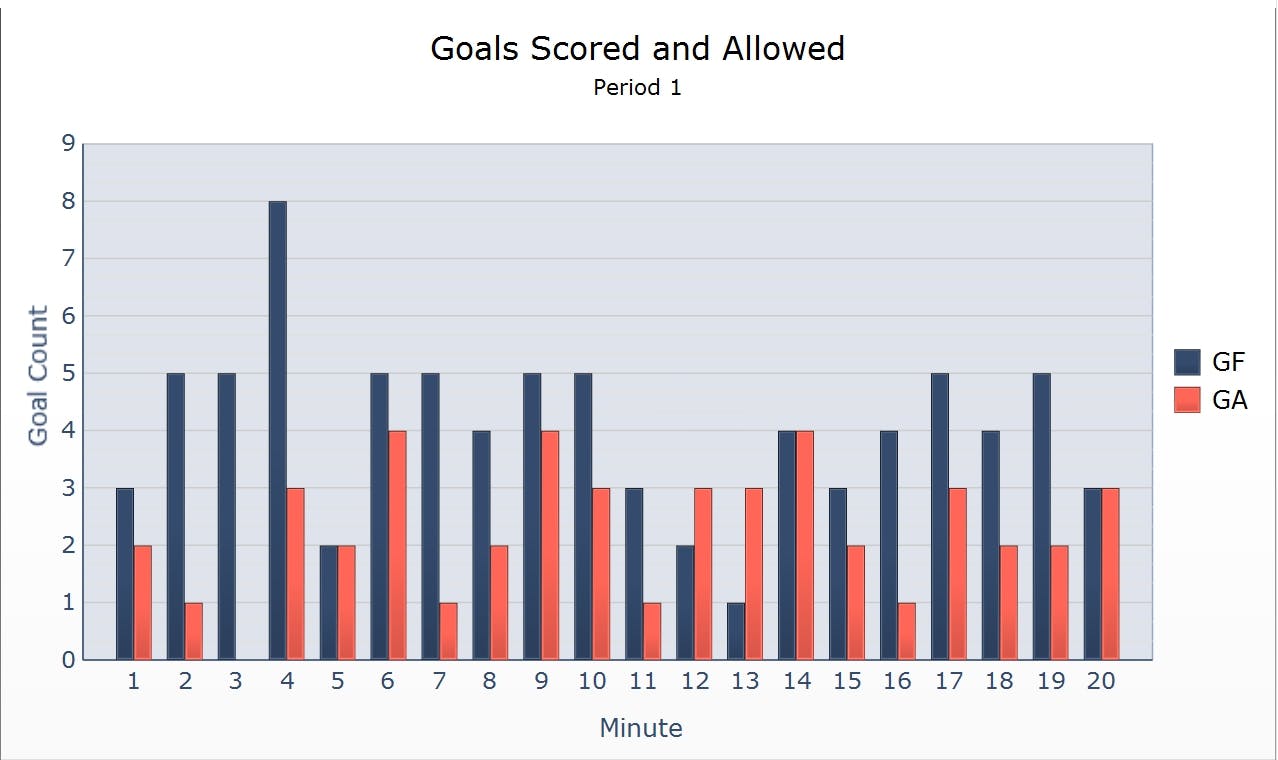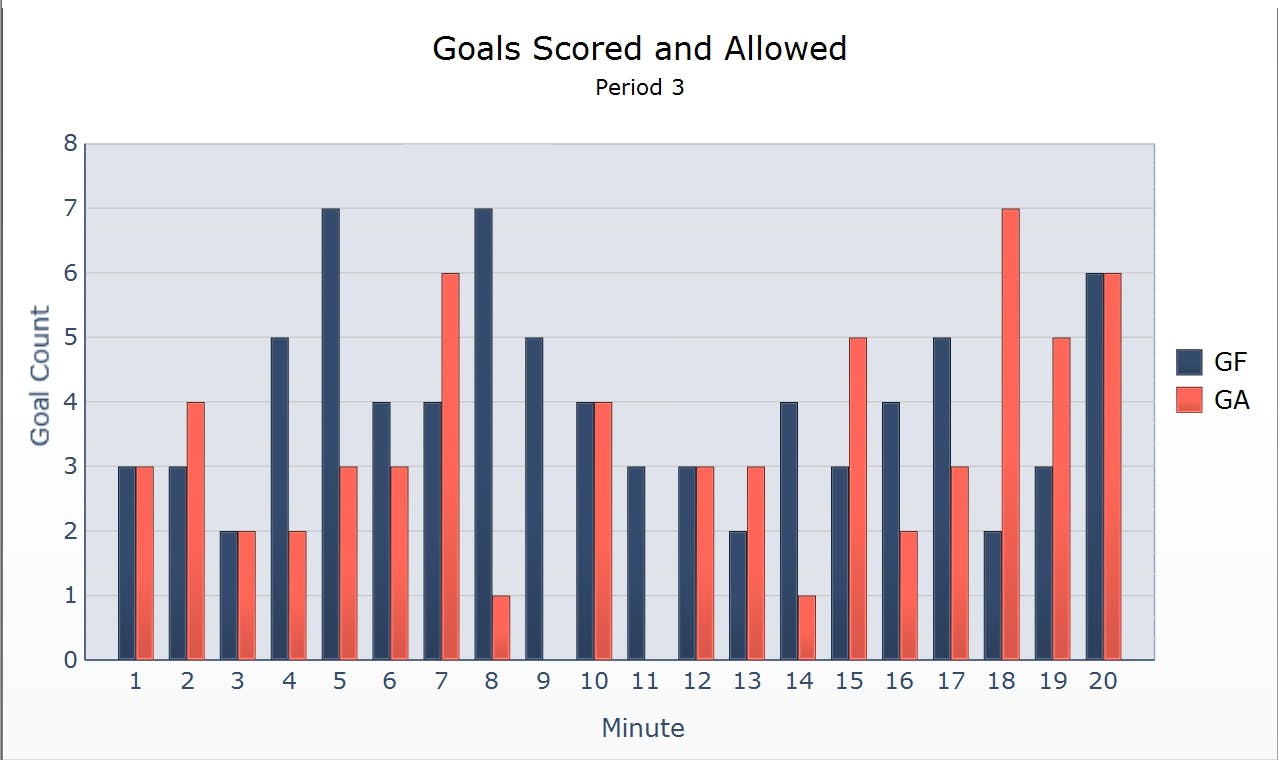A Look At The Goals – Minute-By-Minute
By Cam Davie
11 years ago
Alex Edler scores a rocket at exactly 8:00 of the second period.
The second period was highly eventful for the Canucks this season, both good and bad.
(Photo by Jeff Vinnick/NHLI via Getty Images)
It seems like there have been a lot of goals scored in the final minute, and even the final few seconds of games this post-season. Just last night, we saw the New York Rangers score with 7 seconds left in the third period to tie the game and send it to overtime.
That had me thinking about the Canucks and their season. When exactly did they score goals and when did they allow goals? Did they score a lot of goals in the last minute of a period? Or the first minute? How did they defend in the waning moments of each period?
Click past the jump to see a breakdown of all Canucks goals this past season, both scored and allowed.
NOTE – For the purposes of all charts below I didn’t include overtime goals or shootout attempts/goals. These charts reference only goals scored during regulation time, both for and against the Canucks.
Let’s start with the goals the Canucks scored this season. This season, the Canucks were, once again, a top 5 team offensively, notching 241 goals. This is down fairly significantly from last season’s league-leading 258 goals scored, but looking at goal breakdowns, most of these additional goals were third-period goals, possibly when the game was already decided. Remember, despite scoring 17 less goals this season over last, the Canucks only had threeless wins. So it’s not as though the dip in goal-scoring led to a dramatic drop in results.

Truthfully there isn’t much to extrapolate on this particular chart, when you are comparing goals scored by period. The Canucks were a very balanced team, goal-scoring wise. By period, the Canucks scored 81, 74, and 79 goals respectively. In the first and third periods, you can see that there isn’t much deviation minute over minute. It’s all fairly even, although there was a pleasant spike to start the first period, as the Canucks scored a glut of goals within the first 4 minutes of the first period. There was also burst of goals scored in the final minute of the third period. As you can probably guess, that can be easily explained by a surplus of empty-net goals.
The minute-by-minute breakdown of goals allowed tells a much different story.

The Canucks defence in the second period was just terrible, especially when you compare it to the first and third periods. The Canucks started games very strong defensively, with very few goals allowed in the first five minutes. Much like their offence, a strong start to their games this season went a long way to building up their success. However, unlike the goals scored, the influx in goals allowed in the final three minutes of the third period cannot easily by attributed to empty net goals. They only allowed three EN goals this season. Likely, this is because the Canucks were leading and the opposition was pressing hard for a tying goal. The real story here is the disastrous second period. Minutes 2 through 6 of the second period were terrible for the Canucks, as they allowed 24 goals in that 5 minute block. However, the final five minutes of the second period were downright abysmal for the Canucks. In minutes 16 to 20, they allowed 26 goals. So the "first" 5 minutes (leaving the actual first minute out of the block here) and the final 5 minutes were a trainwreck for the Canucks, accounting for 50 of their 80 goals allowed in the second period. Despite a weird spike in the 11th minute, the "middle" ten minutes of the second period wasn’t all that bad for the Canucks. But they killed themselves with incredibly poor showings in the first five minutes and final five minutes of that period.
Now let’s compare goals-for and goals-against for each period.

As I mentioned earlier, the Canucks started games very well. A strong showing in both goals scored and goals allowed (33 GF, 13GA) in the first 7 minutes, which is approximately the opening third of the first period, gave the Canucks some excellent footing to forge through their games. As the first period went along, the goals for and against tended to even out a little bit. Overall through, the Canucks opening period was their strongest, and their prowess offensively and defensively in the first 7 minutes was oen of the biggest contributors to their success this season.

The second period can really only be described as a rollicking adventure in emotion. For as bad as the Canucks were defensively in the second period, they were still pretty good offensively. Some interesting data here show that there was a very low-event 3-minute span between the 13- and 15-minute mark, then the final five minutes were incredibly HIGH-event, both positively and negatively. That three-minute span was like a calm before the storm, as minutes 16 through 20 were very busy, scorersheet-wise. The closing quarter of the second period can best be described as chaotic.

A bit more of a return to the form of the first period, the Canucks turned the ship around in the third period after horrendous second period efforts. An interesting note here is the Canucks defence in minutes 8 to 14, where they locked down the defence. That seven minute span yielded only 12 goals against. Again, as it tends to happen in most games, the final three minutes was quite high-event from a goal standpoint, but that can be somewhat attributed to empty net goals. That said, the Canucks were mostly better than their opposition in the third period. Of the twenty minute-long blocks of the third period, they outscored their opponent 9 times, were tied 5 times, and were outscored 6 times.
As a fan, you might sometimes think to yourself, "Man, the Canucks are ALWAYS giving up those backbreaker goals!" You know the goals… just when the Canucks score, the opposition comes right back and scores. Even worse, the opposing team scores two quick goals on the Canucks, basically deflating any chance they have of coming back in a game. It seems like that always happens, doesn’t it. In fact, if you look at the numbers, it’s not nearly as dire as you think. Quite the opposite, actually. In this particular case, it shows that perception is quite far off from reality.

Let me tell you how I defined these terms:
Double Up: When the Canucks scored back-to-back goals within 1 minute.
Answer Back: When the Canucks scored within 1 minute after a goal from their opposition.
Caught Sleeping: When the opposition scored within 1 minute after a goal from the Canucks.
Down Then Out: When the opposition scored back-to-back goals within 1 minute.
What these charts tell you is that Canucks were WAY better at scoring the "quick" goal then they were at allowing them. They scored 14 1-minute goals and allowed only 6. What is incredibly impressive was their ability to double up on goals. Scoring back-to-back goals within 1 minute 9 different times is absolutely massive, and they only allowed those type of goals twice.
It’s hard to criticize the Canucks on a season where they won their second consecutive Presidents’ Trophy. But when you break down the goals scored and allowed on a minute by minute basis, the Canucks were largely great for 50 minutes of each game, and were mostly terrible (defensively, anyway) for 10 minutes. Those terrible 10 minutes happened in the second period, from minutes 2 to 6 and then from minutes 16 to 20. Certainly the Canucks couldn’t have finished any higher in the rankings than they did this year. But what would have been different with these Canucks if the last 5 minutes of the second period was anywhere near as good as another 5-minute block during their games?
Sometimes, one bad 5-minute stretch can ruin a whole game.
Recent articles from Cam Davie




